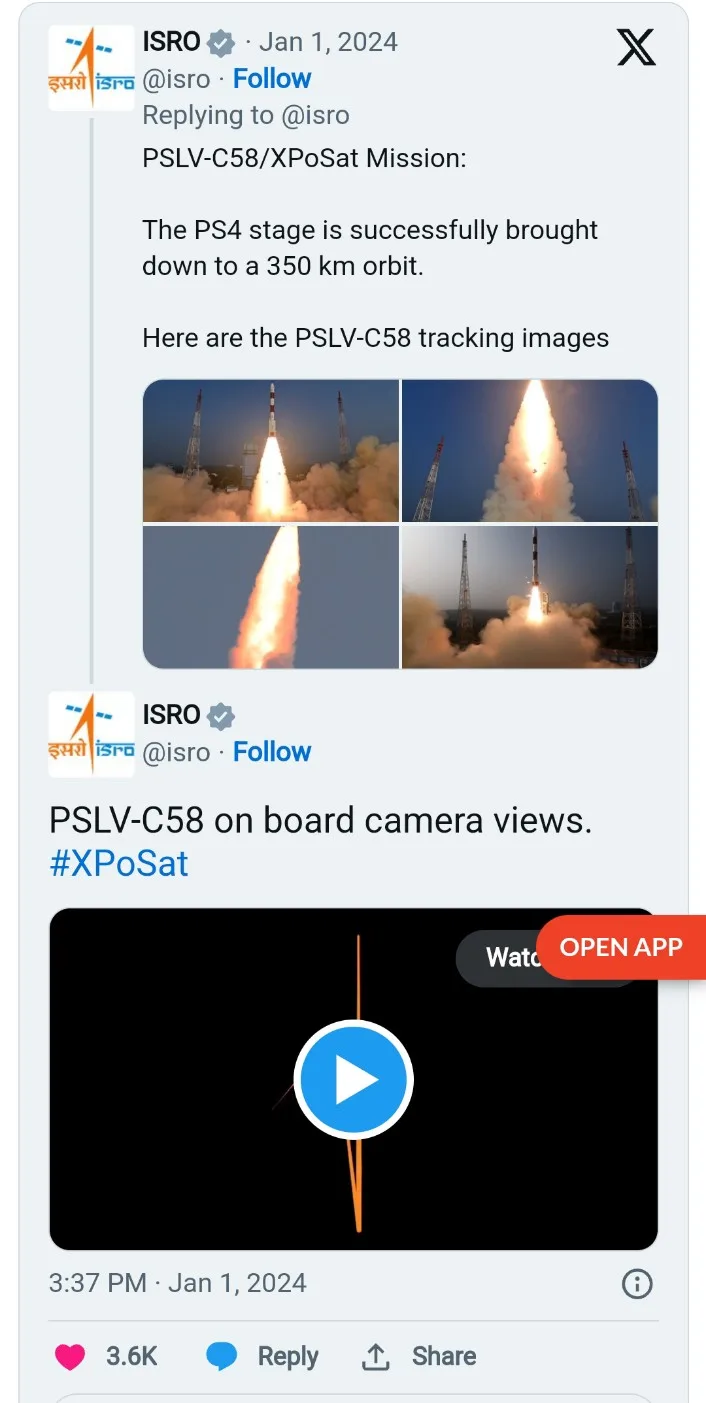The Indian Space Research Organisation (ISRO) marked the dawn of 2024 with a triumphant launch of its first X-Ray Polarimeter Satellite, XPoSat, from Sriharikota, Andhra Pradesh. The PSLV-C58 rocket, on its 60th mission, executed a flawless deployment, placing the satellite into its intended 650km orbit.
Significance of the XPoSat Mission:
India has now become the second country, after the United States, to embark on a dedicated polarimetry mission. This mission aims to unravel the characteristics of celestial bodies by discerning the direction of vibration of incoming waves.
The XPoSat mission holds paramount importance in comprehending the emission mechanisms from various astronomical sources, including black holes, neutron stars, active galactic nuclei, and pulsar wind nebulae. These phenomena originate from complex physical processes, and the mission endeavors to decode their intricacies.
ISRO’s Chairman, S Somnath, addressed the press post-launch, outlining ambitious plans for 2024. He emphasized a target of at least 12 missions within the year, contingent on the agency’s ability to produce hardware efficiently. Additionally, Somnath provided insights into the progress of India’s first solar mission, Aditya-L1, scheduled to reach its final destination at the L1 point on January 6.
Gaganyaan Mission Readiness in 2024:
Chief Somnath announced 2024 as the year dedicated to Gaganyaan readiness. The Gaganyaan mission involves two more abort missions, including an unmanned one, along with parachute drop tests and extensive valuation tests before the planned launch in 2025.
As India’s space exploration endeavors continue to reach new heights, ISRO remains steadfast in its commitment to advancing scientific knowledge and contributing to the global understanding of the cosmos.




